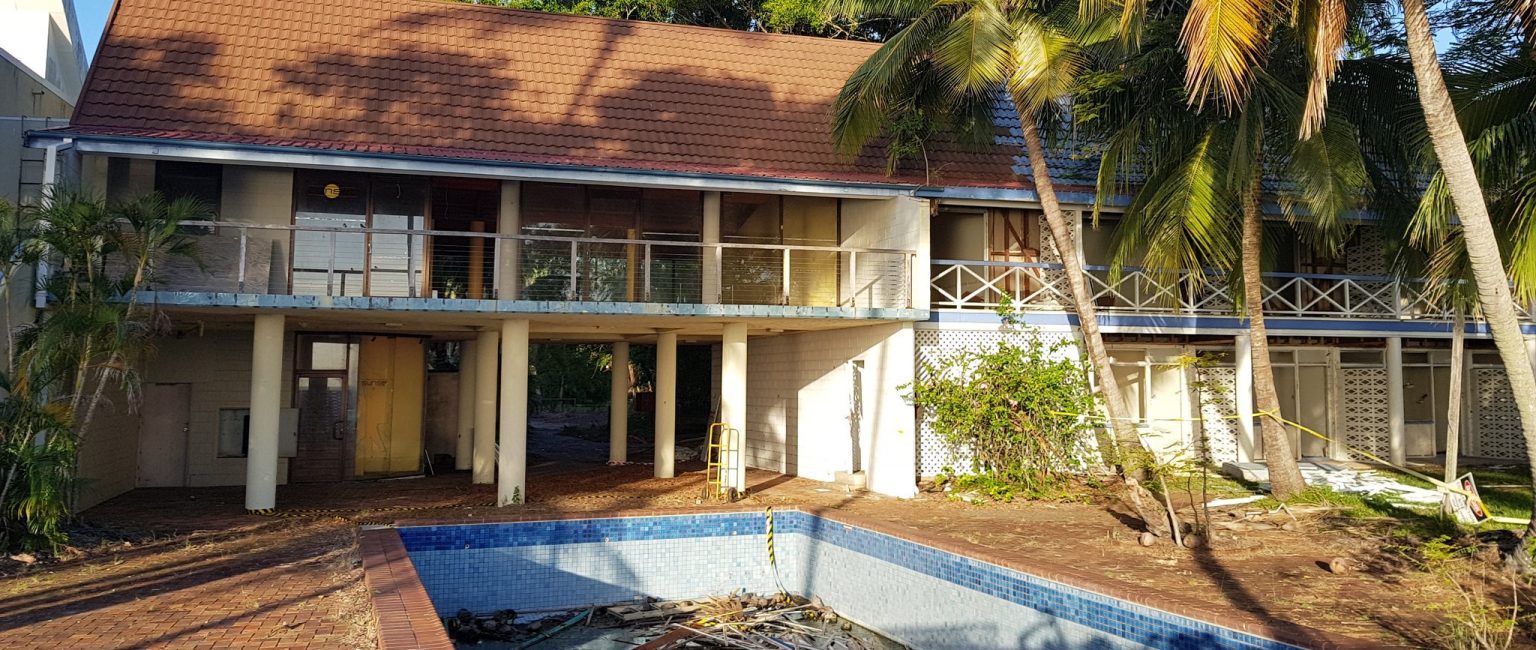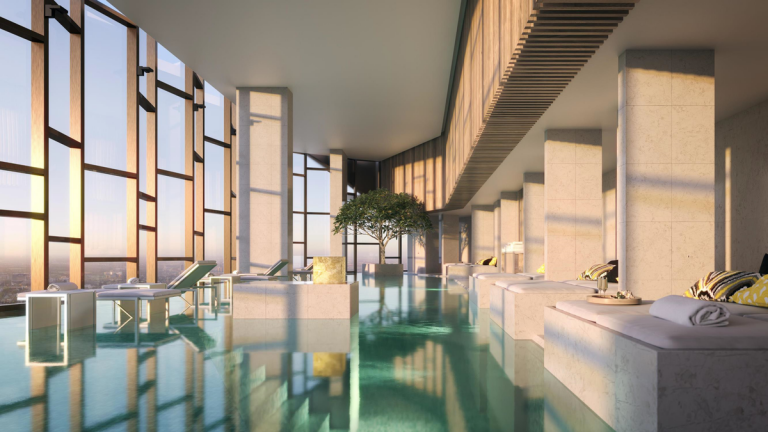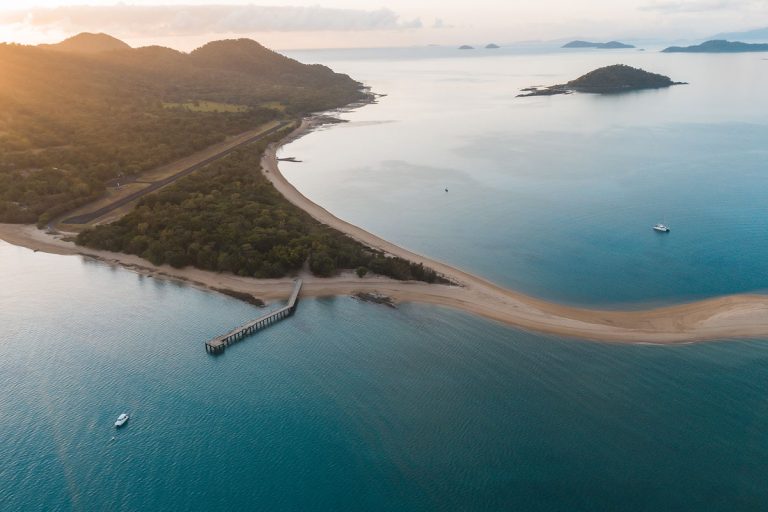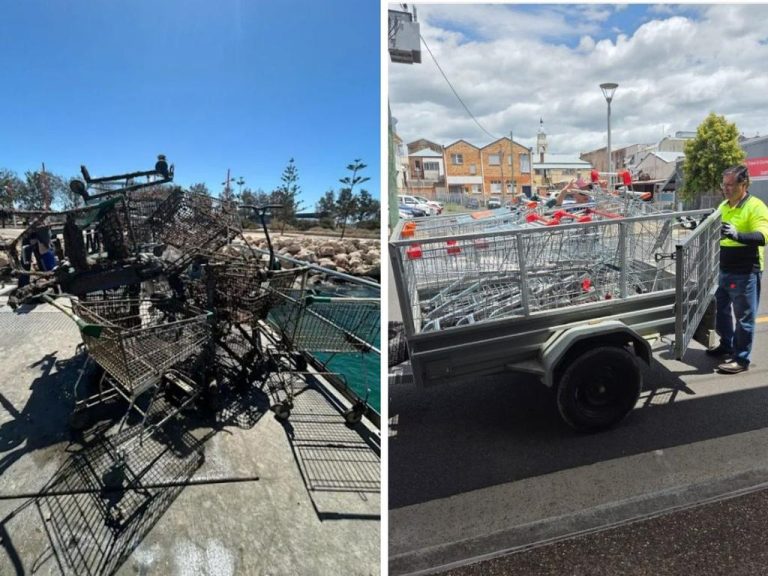Paradise lost: Inside Australia’s abandoned tropical resorts and the uncertain fate awaiting them

There’s something intriguing about the downfall of Australia’s glittering resorts of yesteryear, once alive with holiday cheer and laughter but now lying empty, silent and eerie.
Crippled by financial failure, levelled by cyclones, and often looted by vandals, they now exist as scars on idyllic landscapes – as inglorious beacons of the past.
A handful of once-abandoned resorts have now reopened and are thriving, including Hayman Island and Daydream Island, while Lindeman Island resort was bought late last year after lying empty for 10 years.
Others, such as the crumbling Cape Richards resort on Hinchinbrook Island, have literally been wiped off the map with nature allowed to reclaim.
And many await a new chapter that may or may not come.
Most island resorts — 35 in total — are leased from the Queensland Government. Twelve of them are currently closed and of these, only six have plans to reopen.
In the meantime, some of the derelict remains have almost become destinations in themselves.
Pajinka Wilderness Lodge, Cape York
The remnants of this wilderness resort have stood empty in Cape York for more than two decades.

Pajinka Wilderness Lodge has sat in ruins for 20-odd years. Picture: Facebook/roundaustralia
Cape York Wilderness Lodge was originally opened by Bush Pilot Airways in 1986 and passed through other owners before being taken over by Injinoo Aboriginal Co-operation in 1992 and renamed the Pajinka Wilderness Lodge.
It closed in 2002 for renovations after a fire damaged the buildings but has remained in a forlorn state ever since.

The abandoned resort is in a stunning part of the world. Picture: Getty
Tourists are forced to walk through the resort’s ruins when they follow the track to Australia’s northernmost tip.
Many seem to revel in their ghostly discovery, posting pictures of its decaying pool and graffitied alfresco bar on social media.
Laguna Quays near Airlie Beach
This once-sparkly resort opened with plenty of fanfare in 1992 and featured a golf course designed by Greg Norman and luxury villas caressed by landscaped gardens.
But it was closed three years later due to bankruptcy.

Laguna Quays was a holiday hotspot in its heyday. Picture: Tourism Queensland
A Hong Kong-based company bought it 10 years ago but there’s been no progress since to revive the place.
Some say the resort was forever doomed by its unattractively named setting, located on Repulse Bay and close to Midge Point.

These days, Laguna Quays is unrecognisable. Picture: Scott Radford-Chisholm/News Corp Australia
Capricorn Resort near Yeppoon
Tourism was still a cottage industry in Queensland when the wealthy Iwasaki family from Japan opened one of Australia’s first integrated resorts on the Capricorn Coast in the 1980s.

Yeppoon’s world-famous resort in its prime. Picture: Tourism Queensland

The derelict resort now sits in a state of ruin. Picture: YouTube/We Fish CQ
It boasted hundreds of suites, the largest pools in the southern hemisphere, and two golf courses, and catered to large numbers of international visitors.
It was managed by both Rydges and Accor-Mercure for a time, but in 2016, with visitors complaining that facilities were daggy or in disrepair, Mercure closed its doors.

The eerie site has sat untouched for years. Picture: YouTube/We Fish CQ
The resort remains dilapidated, though the Iwasaki family – who still own the site – say they’re continuing to look at redevelopment options.
Great Keppel Island Resort
Great Keppel Island lured the party crowd in the 1980s with its slogan “get wrecked”, but the fun was all over when the Global Financial Crisis hit in 2008.

Great Keppel Island Resort was the place to stay and play.
Tower Holdings, which had intended to redevelop the picturesque property, abandoned the idea and decided to sell the decaying resort with approved plans in place.
The project has attracted a handful of prospective buyers over the years, including billionaire Gina Rinehart’s Hancock Prospecting, but those plans have also been “wrecked”.

Several hoped salvations for Great Keppel have failed to eventuate. Picture: YouTube/Travelling Natman

Great Keppel is still seeking a new owner to revive its former glory. Picture: Twitter/Johanna Marie
Australia’s wealthiest woman said she wanted to create a “world-class resort” on Great Keppel but in June oas5 she pulled the plug on the deal — rumoured to be around $50 million — without citing a reason.
Tower Holdings reportedly continues to look for a new owner or partner as the resort lies in ruins.
Dunk Island
Lying 4km off the dreamy Cassowary Coast near Mission Beach, the resort on Dunk Island was smashed by Cyclone Yasi in 2011 and has been languishing in disrepair ever since.

Dunk Island was a glittering example of high-end island tourism. Picture: Getty
The resort is on private land and was purchased in 2012 by mining and energy executive Peter Bond, then by Annie Cannon-Brookes, wife of Atlassian co-founder Mike Cannon-Brookes, in 2022.
There’s now hope for an exclusive redevelopment on the island.

Dunk Island was destroyed by cyclone and has sat derelict ever since. Picture: ABC News
South Molle Island
South Molle Island has been billed as a Whitsunday paradise since the 1950s and the resort ran successfully for decades, until Cyclone Debbie left it almost unrecognisable in 2017.
Cabins have been ripped open to the elements, the golf course and tennis courts are being encroached by nature, and the jetty lies twisted in the sea.

South Molle was a hotspot from the moment it opened in the 1950s. Picture: Queensland State Archives
The owner, Shanghai-based China Capital Investment Group, by sheer misfortune, bought the resort with plans to redevelop just a year before Debbie ripped through.
The company was behind the successful redevelopment of Daydream Island, so there is hope of a reopening but no indication of when this may happen.

The resort was ravaged by a cyclone, derailing plans for a redevelopment. Picture: ABC News
Is it worth redeveloping an abandoned resort?
While newer resorts are constructed to be more resistant to cyclones, commercial success is harder to guarantee.
Labour, logistics, ongoing leasehold fees, and upkeep make the day-to-day running of these large accommodation ventures incredibly expensive – quiet periods can be financially catastrophic.
Associate Professor Pierre Benckendorff, a tourism expert based at The University of Queensland, said Australian resorts can find it tough to compete with overseas offerings.
“Established resort destinations in Indonesia, Fiji, Thailand and Malaysia, but also emerging destinations like the Philippines and Sri Lanka, all have much lower construction and labour costs and can offer five-star luxury experiences at a lower price point,” he said.

Running a resort is a tough and expensive prospect. Picture: YouTube/Travelling Natman
Professor Daniel Gschwind at Griffith University’s Institute for Tourism said running an island resort requires special expertise.
“It has a very romantic appeal, but it needs to be combined with sufficient business nous to turn the romance into a long-lasting relationship.”
The challenges don’t appear to have deterred investors.
In the past year, leases for six islands have either transferred to new parties or have current contracts of sale in place, according to the Queensland Department of Resources.

Natural disaster is just one of the risks facing resorts. Picture: ABC News
Meanwhile, the State Government is currently conducting a parliamentary inquiry into the economic and regulatory frameworks for island resorts.
Mr Gschwind said the lease system enables ongoing reassessment of whether a resort is working from a commercial or environmental point of view.
“A big resort is just one idea,” he said.
“There’s also glamping, something sustainable and small, or something for families. We have a broad spectrum of opportunities, and they can all be created.”







